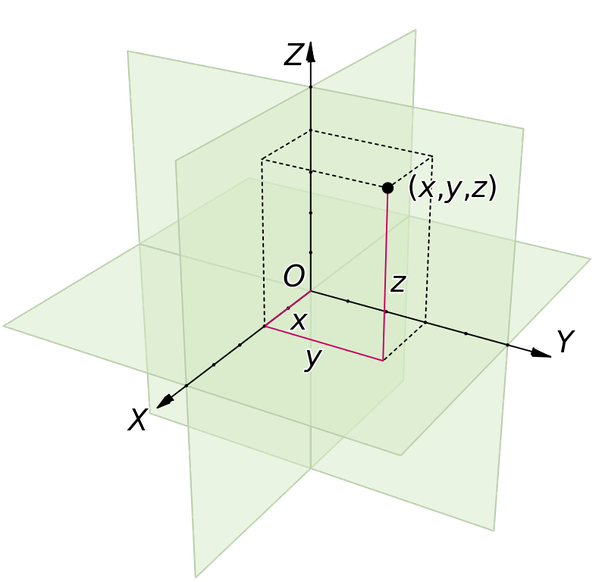The concept of a fourth dimension has been a topic of fascination for centuries. From the philosophical musings of ancient Greeks to the mathematical explorations of modern physicists, the idea of a dimension beyond our three-dimensional world has captivated many curious minds. In this article, we will explore the concept of the fourth dimension and how it relates to the Tesseract Hypercube.
What is the Fourth Dimension?
To understand the concept of the fourth dimension, we must first understand what we mean by dimension. A dimension is simply a measurable property of an object or system. In our three-dimensional world, we can measure objects using three properties: length, width, and height. We can move in three directions: left/right, up/down, and forward/backward. These three properties define our three-dimensional space.
The fourth dimension, then, is an additional property beyond our three-dimensional space. It is a hypothetical dimension that we cannot directly perceive, but can be understood mathematically. In the same way that a cube can be understood as a collection of squares, a hypercube can be understood as a collection of cubes. A hypercube is a four-dimensional analog of a cube, also known as a tesseract.
What is a Tesseract?
A tesseract, or a hypercube, is a four-dimensional cube. In the same way that a cube has six square faces, a tesseract has eight cubic faces. We can think of a tesseract as a cube that has been extruded into the fourth dimension. If we were to try to visualize a tesseract in our three-dimensional space, it would appear as a cube within a cube.
One way to visualize a tesseract is to use a technique called projection. This involves projecting the four-dimensional object onto a three-dimensional plane, such as a computer screen. While this projection is not a true representation of the tesseract, it can help us understand its properties. In the projection, a tesseract appears as a cube within a cube, with additional lines connecting the vertices of the two cubes.
Properties of a Tesseract
A tesseract has many interesting properties that can be explored mathematically. For example, it has 16 vertices, 32 edges, 24 faces, and 8 cubes. It also has a unique property called hypercubic symmetry, meaning that it looks the same from any angle in the fourth dimension.
Another interesting property of a tesseract is that it has 3-dimensional “slices”. Just as a cube can be sliced into 2-dimensional squares, a tesseract can be sliced into 3-dimensional cubes. These slices can be thought of as parallel universes, each one a snapshot of the tesseract at a particular moment in time.
Conclusion
In conclusion, the concept of the fourth dimension is a fascinating and complex topic that has captured the imagination of many throughout history. The tesseract hypercube is an example of a four-dimensional object that can be visualized using projection techniques. It has unique properties that can be explored mathematically, and can be thought of as a collection of cubes within a higher-dimensional space. While the fourth dimension is still a hypothetical concept, the study of hypercubes and other higher-dimensional objects continues to push the boundaries of our understanding of the universe.
sources:
- “What is the Fourth Dimension?” by Ethan Siegel, Forbes (2016).
- “Tesseract” on Wolfram MathWorld.
- “4D Hypercube (Tesseract)” by Cliff Pickover, The Math Book (2009).
- “Exploring the Fourth Dimension with the Geometer’s Sketchpad” by Martha Adams, The Mathematics Teacher (2008).
- “The Fourth Dimension and Non-Euclidean Geometry in Modern Art: Conclusion” by Linda Dalrymple Henderson, Art Journal (1987).
What is Hopf Vibration?
Hopf vibration is a mathematical concept that is closely related to the fourth dimension and the tesseract hypercube. It is a phenomenon in which a three-dimensional sphere is “vibrated” in the fourth dimension, resulting in a collection of two-dimensional circles. These circles are arranged in a particular pattern known as a Hopf fibration.
To understand Hopf vibration, we must first understand what we mean by a fibration. A fibration is a mathematical concept that describes how a space can be decomposed into simpler spaces. In the case of Hopf vibration, a three-dimensional sphere is decomposed into a collection of two-dimensional circles, each of which is linked to a unique point in the fourth dimension.
The Hopf fibration is a specific type of fibration that has many interesting properties. For example, it is a continuous mapping, meaning that the circles are smoothly connected to one another. It is also an example of a non-trivial fibration, meaning that the circles cannot be continuously deformed into a single point.
Hopf vibration has many applications in mathematics and physics, particularly in the study of topology and quantum field theory. It is also a fascinating concept that has captured the imagination of many mathematicians and scientists throughout history.
Sources:
- “Hopf Fibrations and Their Symmetries” by Alexandru Scorpan, Notices of the American Mathematical Society (2008).
- “Topology of Hopf Fibrations” by A. S. Schwarz, Reviews of Modern Physics (1977).
- “Hopf Fibration” on MathWorld.
- “Fiber Bundles and Hopf Fibrations” by Emilie Purvine, The College Mathematics Journal (2014).
- “Hopf Maps and their Symmetries” by N. J. Hitchin, Proceedings of the London Mathematical Society (1976).

